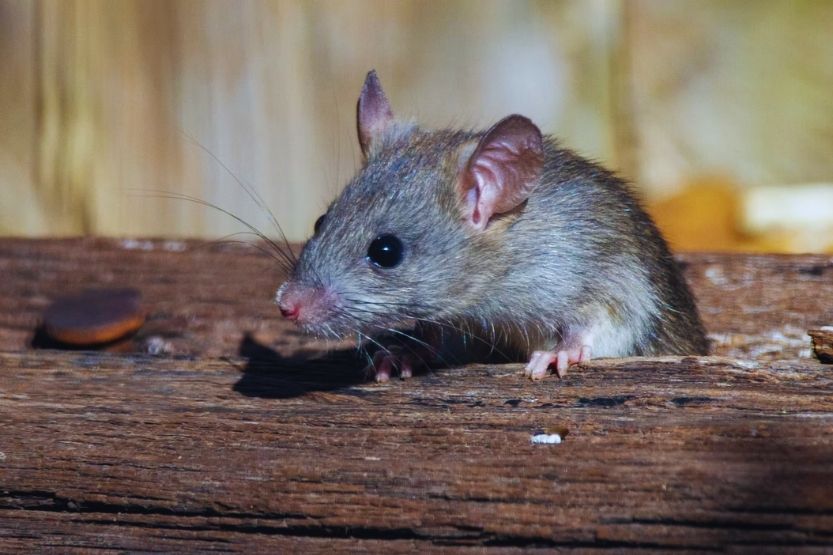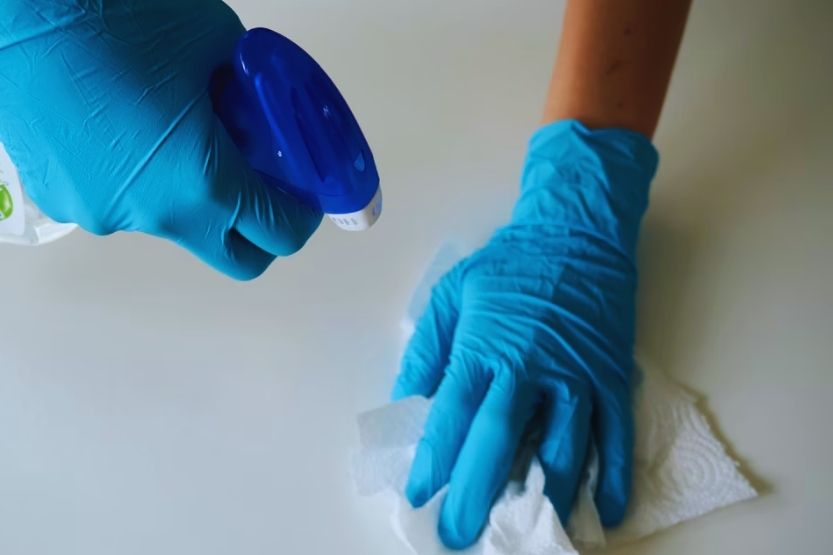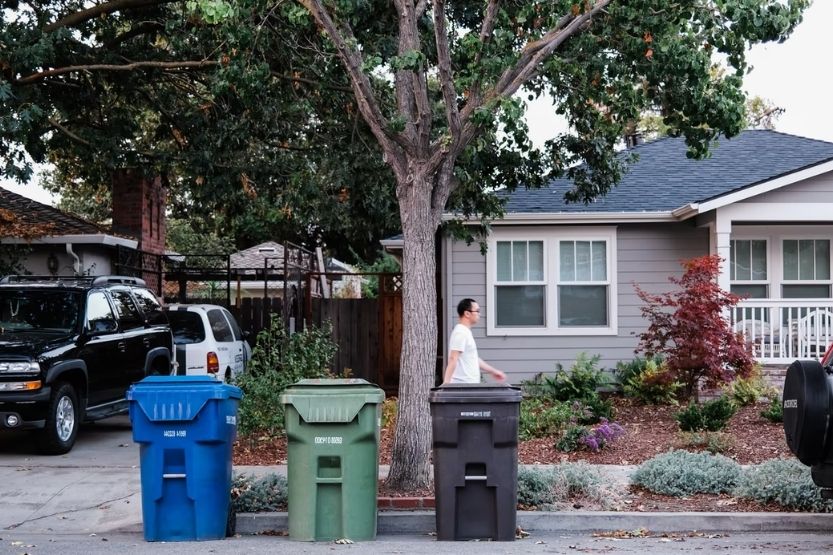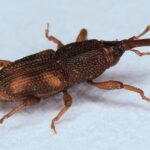It can be quite a shock to find mouse droppings in the kitchen. However, instead of panicking, you should calm down. That way, you can think about what to do to get rid of the mouse droppings in the kitchen.
If you find mouse droppings in the kitchen, you can vacuum any droppings that you see. Also, disinfect the contaminated areas and throw out any contaminated food.
It would also be much better if you hired a professional exterminator. It is the best thing to do when you find that mice have made themselves at home in your kitchen.
Read on to learn more about mouse droppings in the kitchen and eliminate them.
Why Are There Mouse Droppings in the Kitchen?

Mice are some of the most persistent house pests in existence. They are in almost all homes in the world. The bad news is that if you see one mouse, there are probably more of them that you don’t see.
How did they get into your house? Most importantly, why did they do it in the first place?
1. Looking for Shelter
Typically, mice like to spend their time outdoors during the spring and summer. These seasons are nice, and there is plenty of food to forage. However, mice and other rodents will start looking for a warm place to call home once the weather gets colder. Your house will seem very inviting for them.
Your home has everything that a mouse will ever want. These include lots of food and water and crawlspaces to hide. Your home may also be a warm and cozy place for them to spend the cold months in. Unfortunately, once a pair of mice find their way into your house, they will start multiplying like crazy.
2. They Can Squeeze Through Tiny Spaces
You might think that your home is impervious to mice, but it is not. Mice are master contortionists. They can squeeze through cracks or holes that are the size of a dime.
You will need to inspect the entire perimeter of your home to figure out how they got in. However, note that even with the eyes of an eagle, you may still miss a couple of the possible entryways.
3. Not Picky Eaters
If you leave any food out in the open, mice will find a way to get it. Contrary to what cartoons show, mice do not just eat cheese. They are very indiscriminate eaters. House mice typically eat nuts, grains, fruits, and insects whenever available.
However, they will also eat other foods, like dairy and chocolate. Expect them to take in whatever edible substances they can get their tiny paws on. They would even go diving in your uncovered kitchen garbage can for food scraps. Aside from that, they may get into your pets’ food bowls for any leftovers.
Are You Sure Those Are Mouse Droppings?
Before you take any action, ensure that you see mouse droppings first. Being sure will help you make a more targeted and effective effort to eliminate mice permanently.
Mouse Droppings Appearance
What do mouse droppings look like? Identifying mouse dropping from rat droppings or other pests, for that matter, can be tricky. What you need to remember is that size is the key. Mouse droppings are typically 1/8” to 1/4” long and tapered at both ends. They usually look like black rice grains. On the contrary, rat droppings are larger and wider.
You cannot tell how long mouse droppings have been sitting there in your kitchen. The reason is that the color and smell will depend on what the rodents have been eating. The best way to determine if mice are scurrying about in your kitchen is to get rid of the droppings.
After that, come back to the area after 24 hours to check if new ones are in their stead. If you find fresh mice droppings, you have a mice infestation in your hands.
Where to Look for Mouse Droppings?
Mice are nocturnal creatures, so finding one will not be easy. Pest control professionals often use the number of droppings they leave behind to estimate the seriousness of the infestation.
A single mouse can produce up to 75 droppings every day. With that number, you can be sure that more than just one mouse in your house right now. To ensure that you are dealing with mice, check the following areas in your kitchen and the house:
- Kitchen cabinets and other places where you store or prepare your food
- Utility closets and any other areas that can provide them with warmth and shelter
- Up in your attic or ceiling crawl space
- A/C vents, exposed pipes, and holes in the walls where your plumbing goes through
How to Get Rid of Mouse Droppings

Remove the Source
If you want to get rid of mouse droppings in the kitchen, you need to remove the source. This source is the mice infestation that you currently have in your hands. Simply cleaning the droppings is an exercise in futility since new droppings will arrive. If you don’t do anything about it, the amount you have to clean every day will grow exponentially.
Follow the US Center for Disease Control and Prevention Warning
If you want to clean the mouse droppings yourself, heed the US Center for Disease Control and Prevention warning. This is to avoid touching them with your bare hands. Mice droppings often carry all sorts of diseases, and you should not expose yourself to any of them willingly.
Steps to Follow When Cleaning Mice Droppings
Here are the steps that the CDC suggests you do when cleaning mice droppings:
- Air out the area to clean for at least half an hour.
- Wear rubber gloves, a respirator with air filters, and safety goggles.
- Spray the area with a disinfectant spray and let it sit for at least five minutes. You can make your own by mixing one part bleach with 10 parts water in a plastic spray bottle.
- Sweep up the mouse droppings carefully. After that, place them inside a plastic bag and seal it well. Make sure to dispose of them immediately.
- You can also use a vacuum cleaner but make sure that it has a HEPA filter. This is necessary for preventing powdered droppings and mouse dander from getting blown into the air.
- Remove the mice from your home. After cleaning the offending mouse droppings, the next step is to eliminate the mice that are already in your home. Make sure to work on preventing them from coming back.
Again, mouse droppings in the kitchen – what should you do about them? First, you should vacuum the mouse droppings in your kitchen. Then, disinfect contaminated areas and throw away contaminated food. Lastly, ask the help of a professional mice exterminator to eliminate mouse droppings and the mice in your home.
How to Get Rid of Mice
Mice are crafty little creatures. They are not dumb animals who would walk into traps that you set. You have to be strategic in how you tackle this problem:
1. Find Their Shelter
Just putting mouse traps in random places in your house will not be very effective. Do a thorough inspection of your house. Grab a strong flashlight and inspect the perimeter of your home.
Look for any holes that the mice might use to get inside your house. Remember that mice can squeeze through holes the size of a dime. Keep that in mind while you are on patrol.
Closely inspect the places where pipes enter the house from the outside, usually in the basement. Also, make sure that the weather strippings in your doors are still in good condition. The reason is that the mice can also squeeze through the tight space underneath your doors. Once you find the potential entry points, set several traps near them.
2. Set Your Traps
Mousetraps are still the most effective way to remove mice from inside your home. Depending on the size of the infestation, you may need to set quite a lot of traps. Make sure to put these traps in appropriate areas of your house.
Here are some of the types of traps that you can use:
Snap Trap
Many people have used this traditional mouse trap for decades. The traps have a spring-loaded clamp that snaps shut when a mouse triggers it. When you use it correctly, this trap will quickly kill mice.
Electric Traps
These are more modern mouse traps. Electric traps use bait to lure in mice then use fatal electric shocks to make their hearts stop immediately. You do not have to worry about these hurting pets and little kids. These traps will give a short and slightly painful jolt to anything bigger than a mouse.
Glue Traps
These are thick paper or cardboard sheets with one side covered in a thick and sticky adhesive. When a mouse steps on this trap, it cannot free itself. The more it struggles, the more it gets stuck. The nice thing about this is that it can trap multiple mice. However, take note that you can only use it once.
Live Catch Traps
These are like the ones that animal control officers use to catch raccoons but in a smaller form factor. You need to place bait inside the trap. When the mouse triggers the trap, a door will shut tight behind it. This is a humane way to catch problematic mice and release them far away from your home.
3. Set a Bait
Regarding the bait, peanut butter is the most common and effective bait used for luring mice. It has a strong smell and is easy to apply on the trigger of traps. It is also inexpensive. However, you can also use other kinds of food like:
- Grains,
- Birdseed,
- Nuts,
- Chocolate, and
- Cheese.
Keeping Mice Out of the House for Good

If you successfully get rid of the mice infestation in your home, make sure they won’t return. You even have to work harder to prevent their return if you hire and pay a professional pest control expert.
Here are some tips to prevent mice from going back into your house:
1. Use Steel Wool and Caulk to Seal the Entrances
After scouring the entirety of your home for the likely entrances of mice, you should proceed to plug the holes. If you can, use caulk to fill up the gaps since mice hate chewing through them. If you do not have caulk, you can use steel wool instead.
2. Prune the Bushes Away from Your House
Mice exploit the cover that bushes and shrubbery provide so they can move around without being seen. You need to deprive them of their cover by pruning your shrubbery away from your house. Leave ample space between the plants and your house. Also, if you keep firewood, place the stack as far away from your home as possible.
3. Take Away Their Food
Do not tempt mice to steal your food. Keep all your food in sealed containers. Transfer your cereals into plastic containers. Also, keep your kitchen floors and counters clean of any food scraps.
Aside from that, avoid filling your pets’ food bowls to the brim. Feed them the appropriate amount that they can finish. If any food is left in their feed bowls, throw it out immediately and wash the container. Mice will not even bother going inside your home without any food to steal.
4. Cover Your Trash Bin
Use garbage cans that have heavy or airtight lids. You may also use a bungee cord to keep it closed during the night. This way, mice and other pests will have no access to the food scraps in your trash.
Conclusion – Mouse Droppings in the Kitchen
If you find mouse droppings in the kitchen, one thing you can do is vacuum all the pellets you can see. In addition, you should disinfect the contaminated area.
Dispose of any contaminated food immediately. However, it is always best to let pest control experts handle the infestation. This is especially true if it seems that you cannot do it yourself.
Read next:









